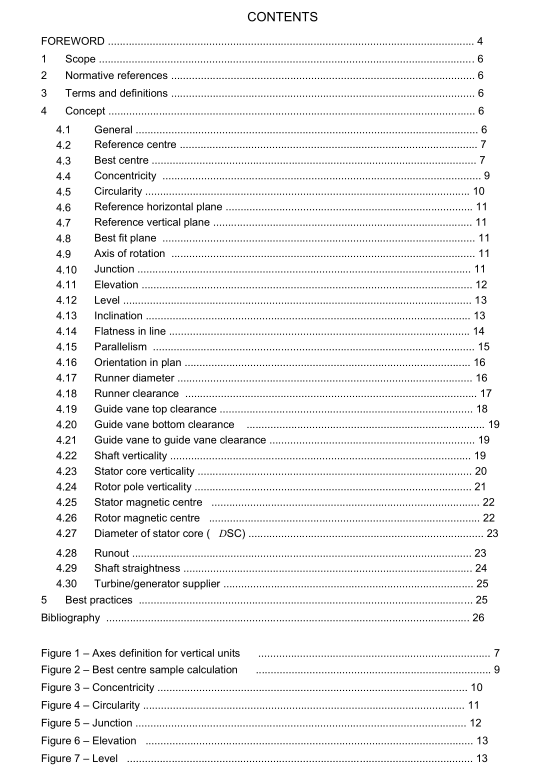IEC 63132-1 pdf – Guidance for installation procedures and tolerances of hydroelectric machines – Part 1: General aspects

IEC 63132-1 pdf – Guidance for installation procedures and tolerances of hydroelectric machines – Part 1: General aspects
1Scope
The purpose of this part of lEC 63132 is to establish, in a general way, suitable procedures andtolerances for the installation of hydroelectric turbines and generators.This document presentsa typical assembly. There are many possible ways to assemble a unit. The size of the machines,design of the machines, layout of the powerhouse and delivery schedule of the components aresome of the elements that could result in additional steps, the elimination of some steps and/orassembly sequences.
lt is understood that a publication of this type will be binding only if, and to the extent that, bothcontracting parties have agreed upon it.
Installations for refurbishment projects or for small hydro projects are not in the scope of thisdocument.An agreement between all parties is necessary.
This document excludes matters of purely commercial interest, except those inextricably boundup with the conduct of installation.
The tolerances in this document have been established upon best practices and experience,although it is recognized that other standards specify different tolerances.
Wherever this document specifies that documents,drawings or information is supplied by amanufacturer (or manufacturers),each individual manufacturer will furnish the appropriateinformation for their own supply only.
2Normative references
There are no normative references in this document.
3Terms and definitions
No terms and definitions are listed in this document.
ISO and lEc maintain terminological databases for use in standardization at the followingaddresses:
. IEC Electropedia: available at http://www.electropedia.orgl
.Iso Online browsing platform: available at http:.l/www.iso.org/obp
4Concept
4.1General
For vertical units, reference axes are defined in relation to upstream,looking at the unit fromthe generator end (see Figure 1).Upstream corresponds to the Y+ axis,0° and 12 h 00.Theangles increase in the clockwise direction; therefore, the X+ axis corresponds to 90 , the right
hand side and 3 h 0o.
For horizontal units, upstream is replaced by vertical up and downstream replaced by vertical down.
4.2 Reference centre The reference centre is the best centre of the designated (or specific) component that all other components should be aligned to.
4.3 Best centre The best centre of a circular shape component corresponds to the point for which the circularity has the minimal deviation. Its location is calculated from a set of radii at equal angles and measured from the reference centre. Determination: The components x and y of the best centre from the reference centre can be calculated with the following two formulae, where 0° is located upstream and the angle increases clockwise:
4.6 Reference horizontal plane
The reference horizontal plane is a horizontal plane located at the average elevation of a feature n the component that the other component should be aligned to.
4.7 Reference vertical plane
The reference vertical plane is a vertical plane located at the average distance of a feature on the component that the other component should be aligned to.
4.8 Best fit plane
The best fit plane is a calculated plane which represents a surface. The best fit plane minimizes the sum of perpendicular distances from each measurement point to the plane.
4.9 Axis of rotation
The axis of rotation is the axis that all points on the rotating components rotate about.
4.10 Junction
A step s, where two components meet, or where the projection of one component meets the other component (in cases where they are not in direct contact). See Figure 5.









